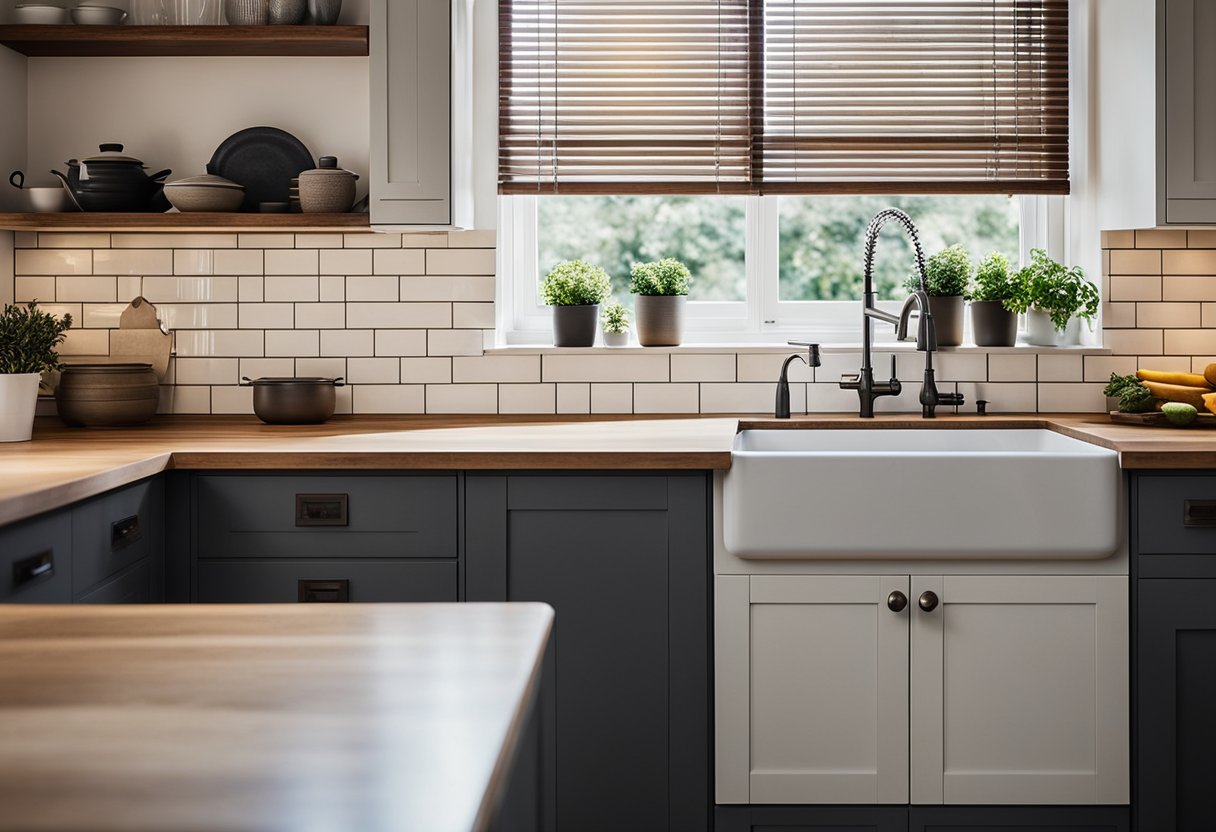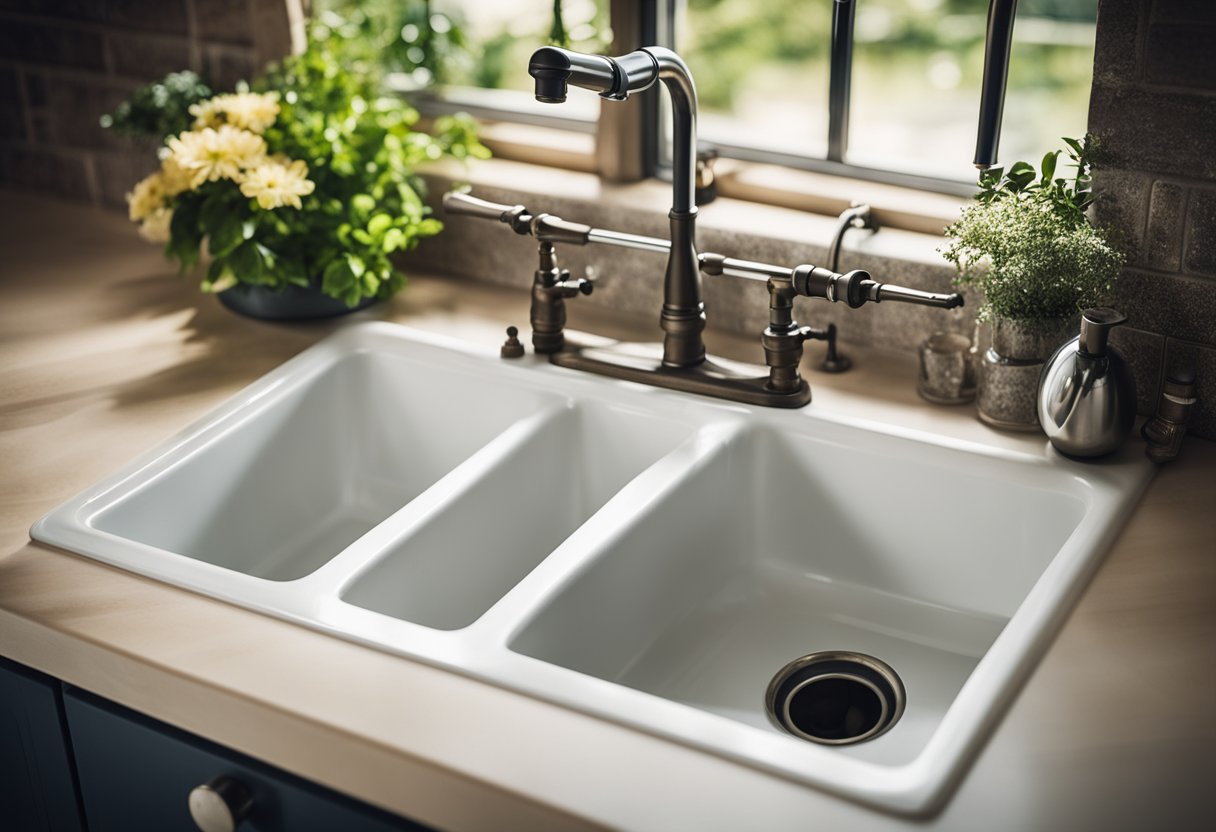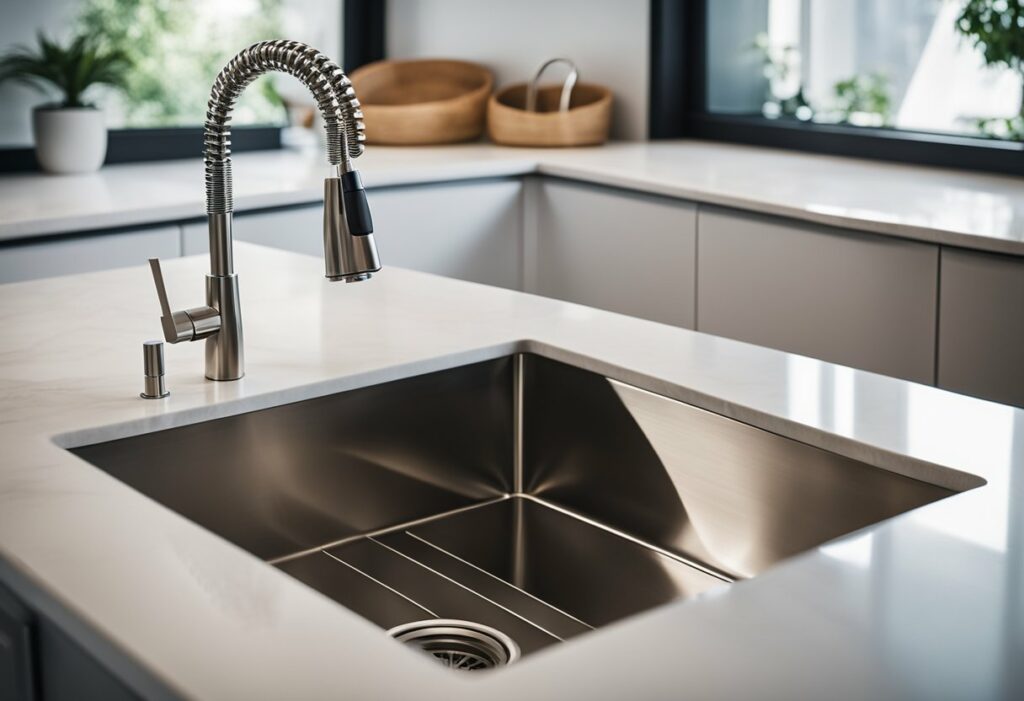Kitchen Plumbing Design: Tips for a Functional and Stylish Space
Are you planning to renovate your kitchen or build a new one? If so, have you considered the importance of kitchen plumbing design? A well-designed kitchen plumbing system can make all the difference in the functionality and efficiency of your kitchen. From the water supply and drainage systems to the fixtures and appliances, every component of your kitchen plumbing system should be carefully planned and installed to ensure that it meets your needs and works seamlessly.

Essentials of Kitchen Plumbing Design When it comes to kitchen plumbing design, there are several essential components to consider. First, you need to determine the location of your kitchen sink, which will impact the placement of your water supply and drainage systems. You should also consider the type of sink and faucet you want, as well as any additional features like a garbage disposal or dishwasher. Additionally, you need to ensure that your plumbing system meets local building codes and regulations.
Design Considerations and Best Practices To ensure the best possible kitchen plumbing design, there are several design considerations and best practices to keep in mind. For example, it is important to use high-quality materials and fixtures to prevent leaks and ensure longevity. You should also ensure that your plumbing system is properly ventilated to prevent odours and moisture buildup. Finally, it is essential to work with a licensed and experienced plumber who can help you design and install your kitchen plumbing system to ensure that it meets your needs and works seamlessly.
Key Takeaways
- A well-designed kitchen plumbing system can make all the difference in the functionality and efficiency of your kitchen.
- Essential components of kitchen plumbing design include determining the location of your sink, selecting the type of sink and faucet, and ensuring that your plumbing system meets local building codes and regulations.
- Best practices for kitchen plumbing design include using high-quality materials and fixtures, ensuring proper ventilation, and working with a licensed and experienced plumber.
Essentials of Kitchen Plumbing Design

Designing the plumbing system for your kitchen can be an exciting process. Understanding the plumbing system, selecting the right materials and incorporating appliances and fixtures are all essential considerations for creating a functional and efficient kitchen plumbing system.
Understanding the Plumbing System
Before you start designing your kitchen plumbing system, it’s important to understand how it works. The plumbing system consists of a water supply system, drainage system and ventilation system. The water supply system provides clean water to the kitchen, while the drainage system removes waste water. The ventilation system removes gases and odours from the kitchen.
Selecting the Right Materials
Selecting the right materials is crucial for the functionality and durability of your kitchen plumbing system. When selecting materials, consider factors such as pipe size, functionality, and durability. PVC and PEX are popular choices for water supply lines, while stainless steel and plastic tubing are popular choices for drain lines. Stainless steel sinks and fixtures are durable and easy to clean, while plastic fixtures are affordable and easy to install.
Incorporating Appliances and Fixtures
Incorporating appliances and fixtures into your kitchen plumbing system is an important consideration. When selecting appliances and fixtures, consider factors such as water connections, supply tubes, and tailpieces. Sinks and faucets are essential fixtures in any kitchen plumbing system. When designing your kitchen plumbing layout, consider the placement of your sink and faucet, as well as the location of shutoff valves and traps. Vent pipes are also important for removing gases and odours from the kitchen.
In conclusion, designing the plumbing system for your kitchen is an exciting process that requires careful consideration of the plumbing system, materials, and appliances and fixtures. By following these essential considerations, you can create a functional and efficient kitchen plumbing system that meets your needs and enhances the overall functionality of your kitchen.
Design Considerations and Best Practices

When designing a kitchen plumbing system, there are several factors to consider to ensure that it is efficient, functional, and compliant with regulations. Here are some best practices to help you create a plumbing plan that will meet your needs while staying within your budget.
Maximising Space and Efficiency
One of the most important considerations when designing a kitchen plumbing system is to maximise space and efficiency. This can be achieved by strategically placing fixtures and appliances, such as the sink, dishwasher, and garbage disposal. Consider corner sinks or freestanding fixtures to save space while adding style to your kitchen.
Compliance with Regulations
It is important to ensure that your plumbing plan complies with regulations. This includes obtaining the necessary permits and following code requirements for drainage, sewage, and ventilation pipes. Failure to comply with regulations can result in fines and other penalties. You may want to consult with experts to ensure that your plumbing plan meets all necessary requirements.
Aesthetic and Functional Design
In addition to efficiency and compliance, it is also important to consider aesthetic and functional design when planning your kitchen plumbing system. Consider the style and trends you want to incorporate into your kitchen design, such as black or white ceramic fixtures. Also, think about the functional requirements of your kitchen, such as the need for a water filtration system or instant-hot-water dispenser.
Proper maintenance is also important to ensure that your plumbing system operates efficiently and lasts for a long time. This includes regular cleaning and inspection of the hot water supply line, water heater, and all fixtures to prevent corrosion and other issues.
When upgrading or remodeling your kitchen or bathroom, it is important to consider the plumbing layout and fixture placement. This can include the stack, bathtub, shower, and toilet placement. You may also want to consider upgrading your water-treatment device to improve the quality of your water.
Overall, designing a kitchen plumbing system requires careful planning and consideration of several factors. By following best practices and consulting with experts, you can create a plumbing plan that is efficient, functional, and compliant with regulations.
Frequently Asked Questions

How can I create a buzzing new layout for my kitchen’s pipework?
To create a new layout for your kitchen’s pipework, you should first consider the existing plumbing and the location of your sink, dishwasher, and other appliances. It’s important to ensure that the pipework is accessible and that there is enough space to work with. You may want to consult with a professional plumber to help you design a new layout that is both functional and aesthetically pleasing.
What are the top choices for kitchen sink taps that’ll spruce up my space?
There are many options for kitchen sink taps that can spruce up your space. Some popular choices include pull-out or pull-down taps, mixer taps, and bridge taps. When choosing a tap, consider the style and finish that will complement your kitchen’s design. You may also want to consider the features and functionality of the tap, such as water flow rate and ease of use.
Could you guide me through the essential components for a kitchen sink’s plumbing?
The essential components for a kitchen sink’s plumbing include the sink itself, the drain, the trap, the waste pipe, and the water supply lines. The sink should be securely mounted and sealed to prevent leaks. The drain should be properly sized and connected to the trap, which prevents sewer gases from entering the kitchen. The waste pipe should be sloped to ensure proper drainage. The water supply lines should be connected to the hot and cold water valves under the sink.
What’s the ideal material for my kitchen’s drain pipes to ensure a top-notch flow?
The ideal material for kitchen drain pipes is PVC or ABS plastic. These materials are durable, corrosion-resistant, and have a smooth interior surface that promotes good flow. Cast iron pipes are also an option, but they are heavier and more expensive.
Can you show me a clear diagram to help me visualise my under-sink plumbing setup?
Here is a diagram that shows a typical under-sink plumbing setup. It includes the sink, the trap, the waste pipe, and the water supply lines. This diagram can help you understand the components of your kitchen sink’s plumbing and how they are connected.
What’s the recommended height for plumbing fixtures to make my kitchen both stylish and functional?
The recommended height for plumbing fixtures in a kitchen depends on the height of your countertops and the type of fixture. For example, the standard height for a kitchen sink is 36 inches from the floor to the top of the sink. The height of the faucet should be proportional to the size of the sink and the height of the user. A professional plumber can help you determine the ideal height for your plumbing fixtures based on your specific kitchen design.



